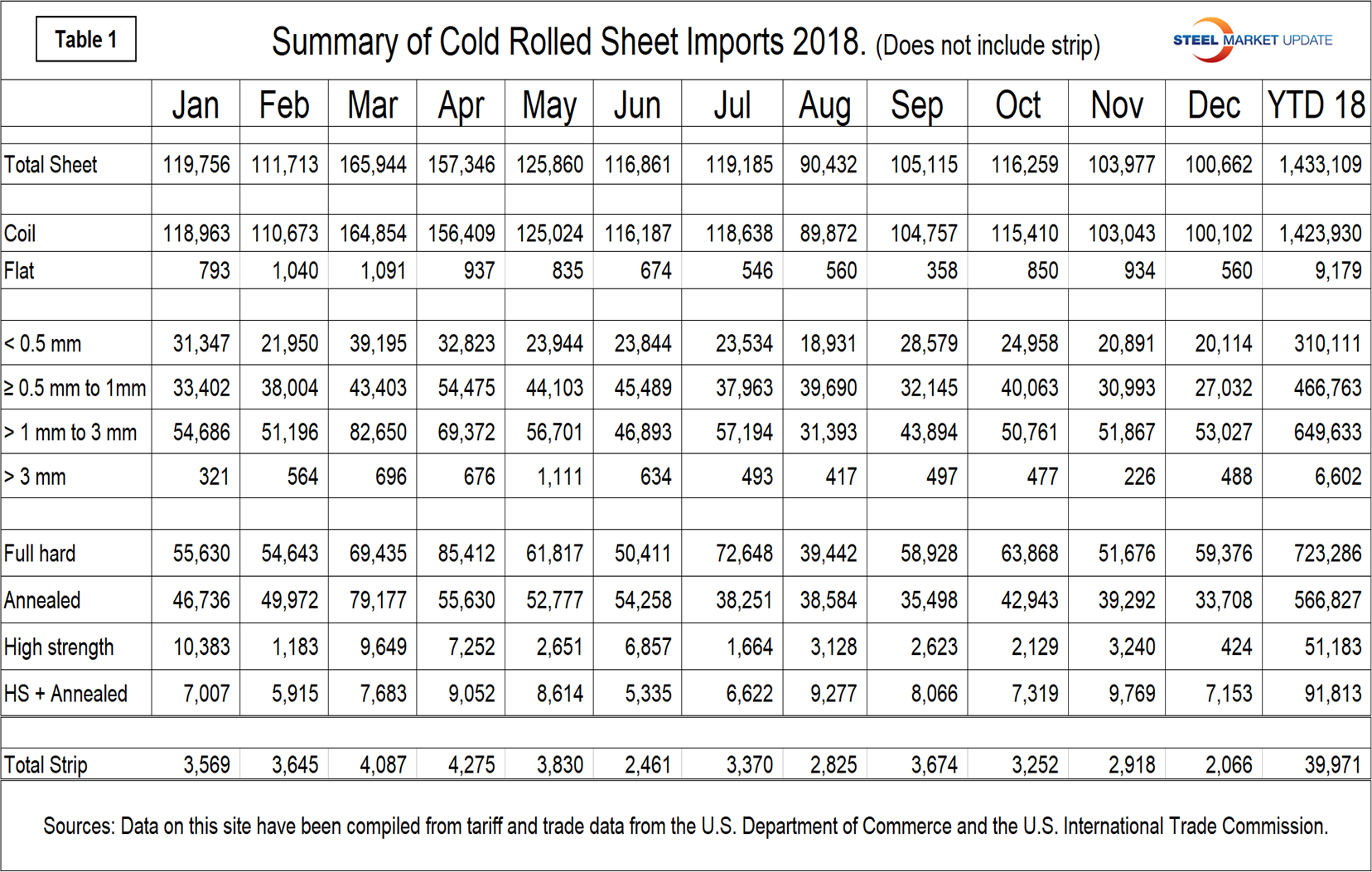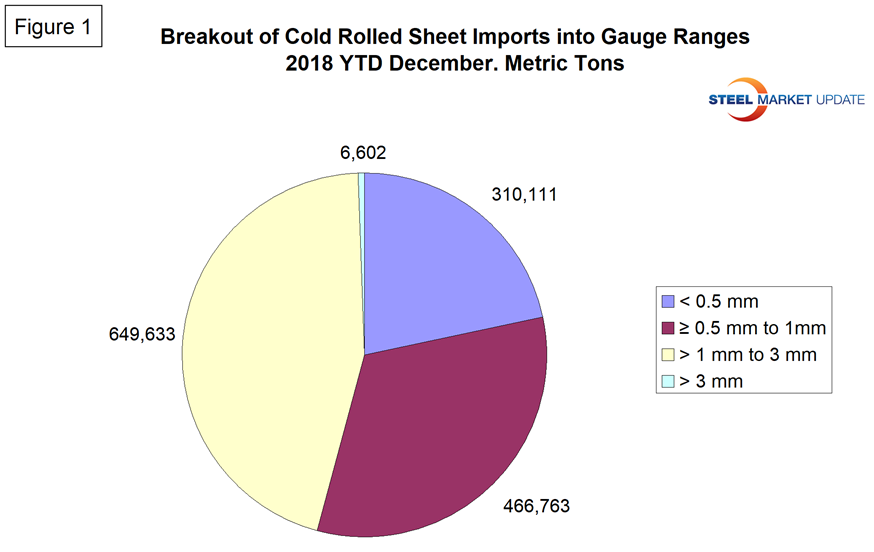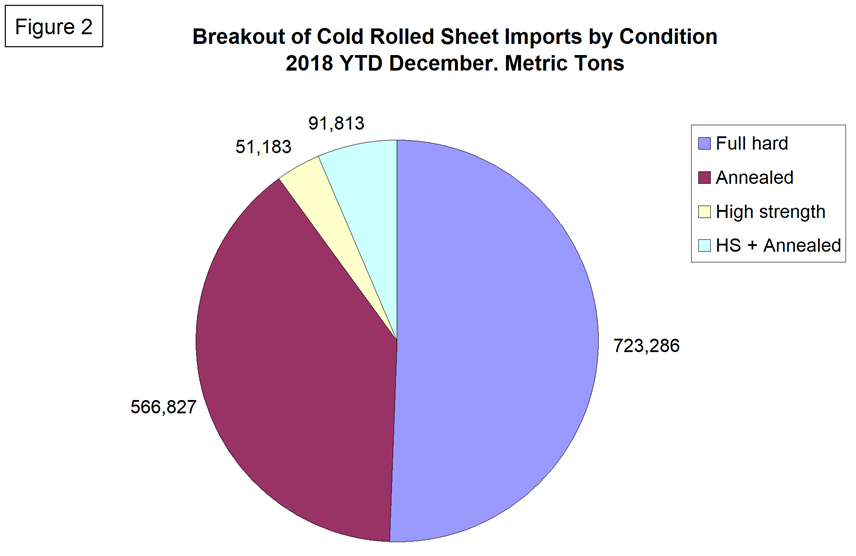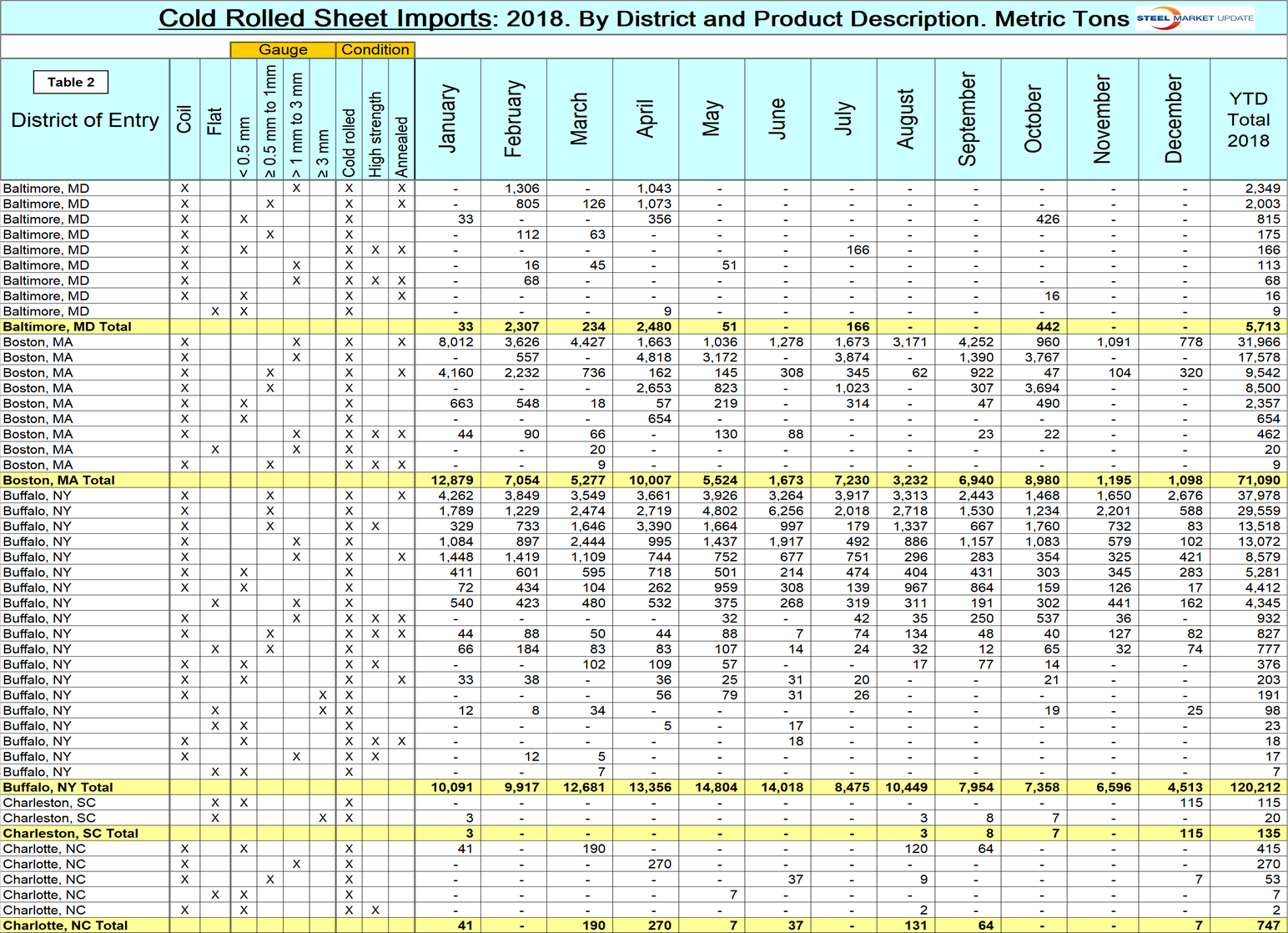Market Data

March 12, 2019
SMU Report: CR Sheet Imports by Product Detail Through December
Written by Peter Wright
Premium subscribers to Steel Market Update receive reports on imports broken down into district of entry and source nation. This drill down report takes the regional analysis to the level of product detail. Our intent is to report this drill down for CR sheet in the rationale that the finer the detail steel buyers have about what is coming into their region, the better job they can do of negotiating with suppliers and the more they know about their competitors’ activities.
Using U.S. International Trade Commission (USITC) data, SMU has taken the import tonnage of cold rolled sheet and broken it down into coil and leveled; then it breaks out four thickness ranges and identifies how much was full hard, annealed and high strength. Finally, this analysis is taken to the district of entry level. Total 2018 sheet and strip imports through December were 1,433,109 and 39,971 metric tons, respectively.
Through December 2018, of the total cold rolled sheet and strip imports into the U.S., only 2.7 percent was strip; 45.3 percent of the CR sheet imports were >1 to 3mm thick and 50.5 percent was full hard.
Table 1 is a monthly summary through December and final 2018 tonnages showing gauge range and condition monthly and the annual total. The total on the first line does not include strip.

Figure 1 breaks the year-to-date cold rolled sheet tonnage down into the four gauge ranges that are identified in the HTS codes. Year to date December, 21.6 percent was < 0.5 mm, 32.6 percent was ≥ 0.5 mm to 1.0 mm, 45.3 percent was >1.0 to 3.0 mm, and 0.5 percent was > 3.0 mm.

Figure 2 does the same thing for condition. It identifies the volume of full hard, annealed, high strength and high strength annealed. Year to date December, 50.5 percent was full hard, 39.6 percent was annealed, 3.6 percent was high strength and 6.4 percent was high strength annealed.

Table 2 is a small part of a sheet that shows detail for every region in the U.S. and is available here for download. It shows the product detail of cold rolled sheet imports by district of entry. For example, the highest volume item entering Buffalo in 2018 was ≥0.5 to 1 mm annealed. To cite another example, if a steel buyer in the Detroit region wanted to know how much high-strength annealed >1 to 3 mm had entered through that district year to date, the answer is 47,237 metric tons, and he/she can see that the monthly breakdown of that volume has been very consistent suggesting repeat contractual volume. The buyer, knowing his/her own activity, would then know more about the activities of competing companies in that region.

Note: This data was accessed through the USITC database. All steel traded globally is classified by the Harmonized Tariff System (HTS). The HTS code has 10 digits. The first six are globally universal. The last four are used at the discretion of the nations involved in a particular transaction and are the basis of this report. The way the U.S. uses the last four digits to define products may be different from other nations’ product classification.







